The Lawmatics Blog
Insights on legal marketing, automating the law practice, and legal tech in general
About the session
Behind every great client experience is a system quietly keeping things on track. The newest automation updates in Lawmatics build on that foundation, making it even easier to build and manage their automated workflows.
In this session, Devon Butler and Clare Struzzi walk step-by-step through what’s new. They cover trigger-based automations, appointment workflows, shared entry rules, and a simple way to organize everything in folders. Together, these improvements give firms even more control, flexibility, and time back in their day.
Webinar slide deck
With the legal industry poised for 5.18% annual growth, innovation is key in the face of evolving client demands and growing caseloads. Top law firms are expanding their client base with smart marketing and improved services — all while optimizing their operations for agility and efficiency.In this roundtable discussion, our panel of industry experts shared their insights into building sustained financial health and commercial success.
Panelists

Matt Spiegel
Co-founder & CEO,Lawmatics

Ashley Robinson
CEO & Founder,Green Cardigan Marketing

Bonnie Faucett
CEO & Founder,Legacy System

Gyi Tsakalakis
President & Co-founder,AttorneySync
Time stamps of key takeaways
0:00 — Introductions
Get to know our panel! They have a vast range of expertise in the legal industry as marketers and attorneys themselves, in practice areas spanning from estate planning to criminal defense.
7:16 — Pillar 1: Marketing
Throwing money at marketing won’t fix your problems without a strategy. It’s about attracting the right clients, accelerating growth, and minimizing lead attrition. Here, our experts break down the relationship between getting clients in the door and creating value for your firm.
30:25 — Pillar 2: Operations
Streamlining operations is about making the most of what you have. Increasing bandwidth and eliminating redundant manual work is the first step to freeing up your team to give more personal and specific attention to your clients.
51:05 — Pillar 3: Client relationship management
This section is about driving referrals and repeat business. The key here is in creating quality experiences that turn former clients into evangelists for your firm. Our experts give some advice on how to cultivate these relationships throughout the client journey, from increasing initial retention to boosting the firm’s reputation through reviews and referrals.
101:53 — Conclusion
Our speakers provide some closing thoughts, recap important themes, and answer a few questions from the live chat.
Webinar slide deck
The Business Intelligence Group has named Lawmatics a 2024 Best Place to Work award. This recognition honors organizations fostering exceptional employee experiences and driving exceptional performance through vibrant and engaging work environments.“At Lawmatics, we’ve worked hard to cultivate an environment where everyone is empowered to show up as their authentic selves and take ownership of their craft,” said Lawmatics CEO and Co-founder Matt Spiegel. “We’ve achieved what we have as a company because we’re lucky enough to have fantastic people deeply motivated to do meaningful, high-quality work.”Maria Jimenez, chief nominations officer of Business Intelligence Group, commended the commitment of Lawmatics to employee well-being and excellence."Congratulations to Lawmatics for creating a workplace culture that prioritizes employee well-being and fosters excellence," she said. "This recognition is a testament to your dedication to building a strong and engaged workforce, even amidst challenging times. We commend your commitment to listening to employee feedback and taking action to create a truly exceptional work environment."Lawmatics was previously a finalist as a Best Place to Work in 2023. The organization’s devotion to the spirit of collaboration also manifests in dynamic partnerships with organizations including the State Bar of Texas and legal tech providers attorneys use every day, from Clio to CallRail. The CRM won Product of the Year at the 2023 Sales and Marketing Technology Awards, was previously a finalist as a Best Place to Work in 2023 and is most recently a 2024 Steve Awards finalist.
As the foreign-born population surpassed 46 million in 2022, immigration lawyers have an expanding potential client base. Concurrently, the immigration system is straining under an enormous backlog–with over 2 million pending cases as of October 2023, triple the amount from 2017. This backlog decelerates case resolutions and imposes considerable challenges on law firms, including extended case durations and increased client uncertainty.Immigration law firms must adopt targeted marketing strategies that are client-centric to generate leads, offering security, flexibility, and resilience for their clients.Immigration law firms must blend innovative outreach with operational efficiency. By doing so, they can distinguish themselves and thrive in a demanding legal environment.
Strategic marketing assessment for immigration law firms
Before strengthening your marketing strategies, we need to take a step back and assess your marketing and technology assets. We want to get a holistic picture of acquiring and retaining clients.
Checklists for evaluating your digital marketing assets
Evaluating your firm's digital marketing foundation is crucial to establishing a competitive edge. Let's look at your online presence for its effectiveness in connecting with and captivating your target audience.
Quick website audit
Your website serves as the digital front door to your firm. Look at your website with fresh eyes and without assumptions. Does your website accurately represent your brand and the services you offer?Walk through this short checklist:
- Branding
- Does the website clearly display the firm's name and logo?
- Is the firm's unique value proposition or mission statement prominently featured?
- Services offered
- Are the immigration services offered listed and explained (e.g., Visas and Temporary Status, Citizenship and Permanent Residency, Special Programs)?
- Is there clear information on specialized practice areas within immigration law (e.g., asylum, deportation defense, employment-based immigration)?
- Are there case studies or examples of successful cases to illustrate these services?
- Target audience
- Is there a clear statement about who the firm serves (e.g., students, families, businesses)?
- Does the website address specific challenges or concerns of each target audience segment?
- Are there testimonials or client stories that resonate with these target audiences?
- Contact information
- Is the contact information prominently displayed (phone number, email, office location)?
- Is there an easy-to-use contact form available?
- Are there direct links to the firm’s social media profiles for further engagement?
Content review
Content is a key component of your firm's online presence, helping to establish your expertise in immigration law and SEO authority.
- Blog
- Are blog posts regularly published with relevant, informative content?
- Do blog topics cover a wide range of immigration issues and updates?
- Is there a consistent voice and style that reflects the brand's personality?
- Videos/podcasts
- Are multimedia elements like videos or podcasts being used to engage the audience?
- Do these videos/podcasts cover informative and relevant topics to your audience?
- Is there a schedule for releasing new videos or podcast episodes to keep the audience engaged?
- Authority building
- Does the content position the firm as a knowledgeable authority in immigration law?
- Are there articles or posts that showcase your lawyers' expertise and achievements in the field?
- Is the content shared across other platforms or publications to widen reach and credibility?
Marketing strategies for immigration law firms
Alright, so we have our foundation and a solid website. Let’s look at how you can refine sophisticated marketing strategies to stand out and reach your target audience. Given the unique challenges and opportunities in immigration law, it’s imperative to develop tailored marketing tactics that attract potential clients and foster long-lasting relationships.

Maximizing referral potential
Referral marketing is definitely one of the best and most crucial channels for client acquisition and your firm's growth. The ABA Model Rule 7.2 permits you to ask for referrals from clients and participate in referral programs but prohibits compensating anyone for recommending the lawyer's services (except paying a qualified lawyer referral service)- so check your local rules to make sure you comply.You need to spend time cultivating and diversifying your referral channels. Adopt a proactive and strategic approach to turn referrals into a robust and steady source of new business. Here are some great ways to really capitalize on referral marketing.
1Enhancing client relationships
Of course, you are already working toward building strong, trust-based relationships with your clients. Improve your client service by:
- Scheduling regular check-ins with clients during and after their matter resolution.
- Send personalized thank-you notes to show gratitude and foster goodwill.
- Provide educational resources that empower your clients, enhancing their understanding of their matter.
- Send out client feedback surveys to gauge client satisfaction and areas for improvement.
2Leveraging testimonials and reviews
Ask active clients to share their positive experiences with your firm through a testimonial or review. While direct incentives for referrals are not permissible, satisfied clients often willingly provide testimonials or online reviews.
- Follow up with clients to request testimonials or online reviews after a successful case resolution. You can provide clients with questions to help guide their testimonials, making it easier for them to provide meaningful feedback.
- Feature client testimonials prominently on your website and office, ensuring compliance with ethical guidelines.
- Monitor and professionally respond to online reviews to enhance your firm’s reputation.
3Staying in touch
Keeping in touch with leads or former clients to keep the firm top-of-mind may indirectly lead to referrals.
- Send regular newsletters to your clients with updates on immigration law, case studies, and relevant legal tips.
- Send holiday, milestone, or birthday greetings to former clients to maintain a warm relationship.
- Share anonymized success stories in your communications to showcase your firm’s effectiveness.
4Professional network alliances
Forge alliances with other professionals who often interact with potential clients, like community leaders or other legal specialists. Collaborate on initiatives like educational workshops, which can indirectly lead to referrals.
- Actively participate in associations or groups focusing on immigration, such as the American Immigration Lawyers Association (AILA).
- Host educational or networking events aimed at professionals in compatible fields, such as cultural community groups, universities, businesses, ESL teachers, etc.
- Create joint content like CLEs, webinars, or articles with other lawyers or compatible professionals.
- Maintain consistent communication with your network to reinforce your relationships.
5Tracking and analyzing referrals
Incorporate a referral tracking mechanism into your CRM to keep tabs on where new inquiries are coming from. Analyze this data to identify your most productive referral sources and adjust your strategies as needed.
- Have your team score the quality of the referrals by channel so you can see where your best quality matters are coming from.
- Include a cost analysis of acquiring clients through different referral sources.
- Monitor the success rate of cases coming through referrals to assess the quality of these leads.
- Track how actively engaged your referral sources are over time (e.g., how frequently they refer clients).
- Look for trends and patterns in your referral data over time, such as seasonal variations or changes in referral behavior.

SEO priorities for immigration law firms to boost online visibility
You need an SEO strategy, even a simple one, to establish a commanding online presence. SEO is a complex, evolving field, and staying ahead requires a strategic, long-term approach. The top three SEO strategies outlined here are designed to be impactful and sustainable investments for your firm, ensuring you effectively reach and engage your target audience.
1Produce high-quality, educational content
Resonate with your audience by creating high-quality, educational content. Go deep into the concerns and questions that are most relevant to your potential clients. Your firm will become a trusted resource and improve its online visibility and search engine rankings by producing rich, informative content that addresses these issues in an accessible manner.
- In-depth client issue analysis: What are your clients worried about? What questions is your intake team always answering? Answer these questions, and use tools like Google Trends or keyword research to capture what potential clients are searching for regarding immigration law.
- Rich content creation: Develop comprehensive articles, guides, and FAQs that address these client concerns in a clear, informative manner, avoiding legal jargon and empowering your clients.
- Utilize various formats: Incorporate various content formats like infographics, downloadable guides, and blog posts for a broader appeal.
- Expert contributions: Collaborate with immigration experts for guest articles to enhance credibility and provide diverse insights.
2Leverage video marketing for enhanced engagement
Video marketing offers a dynamic way to connect with and educate your audience because it shows off your personality, communication skills, and expertise. By producing a range of video content on immigration topics, your firm can effectively engage potential clients.
- Establish a YouTube channel: Create a dedicated channel for immigration law education using SEO-optimized video titles, descriptions, and tags.
- Diverse video content: Produce different kinds of videos, including explainers, client testimonials, and case studies, to cater to viewer preferences.
- Interactive webinars: Host live sessions and webinars to directly engage with your audience, providing a platform for Q&As and real-time discussions.
3Optimize for local SEO
Local SEO is where you target clients in your geographic areas. Here are four ways to get local visibility:
- Google My Business optimization: Claim and optimize your Google My Business listing to improve local search visibility.
- Consistent NAP information: Ensure your firm's name, address, and phone number are consistent across all online directories and your website.
- Local keywords: Include location-based keywords in your website's content and metadata to effectively target local clients.
- Local community engagement: Participate in local community events and share these activities on your website and social media channels.
Checklist: additional technical SEO activities for immigration law firms
Going beyond the basics, numerous technical SEO activities can further enhance your firm's online presence. Each of these tasks helps fine-tune your website to be more discoverable and appealing to search engines and potential clients.
- Conduct regular technical SEO audits to identify and fix issues like broken links, crawl errors, and slow page loading speeds.
- Use SSL encryption to secure your website, as HTTPS is a ranking factor for Google.
- Optimize your website’s architecture for easy navigation and effective indexing by search engines.
- Ensure your website is fully responsive and provides an optimal viewing experience on mobile devices.
- Implement accelerated mobile pages (AMP) for faster loading times on mobile.
- Test your website’s mobile usability regularly using tools like Google's Mobile-Friendly Test.
- Engage in ethical backlink building by contributing guest posts to reputable legal and immigration-related websites and blogs.
- Participate in legal forums and discussions, providing valuable insights and including a link to your website where relevant.
- Collaborate with other legal professionals and industry influencers for joint content creation or webinars, which can provide backlink opportunities.
- Implement schema markup on your website to help search engines better understand the content of your pages (e.g., markup for articles, attorney profiles, and FAQs).
- Use structured data to enhance your search results with rich snippets, which can improve click-through rates.

Multilingual capabilities as a client-centric marketing strategy
Offering multilingual services demonstrates a commitment to inclusivity and can differentiate you as an accessible and client-focused immigration lawyer.
Integrating multilingual offerings into marketing
Effective marketing in immigration law requires demonstrating an understanding of and respect for the diverse backgrounds of your clients. Integrating multilingual offerings into your marketing strategies is more than just a service feature; it's a testament to your firm's commitment to inclusivity and cultural competence.
- Deploy multilingual content to connect with specific communities across appropriate channels.
- Spotlight your cultural competence and multilingual capabilities as a cornerstone of your value proposition.
- Ensure website and digital content reflect multilingual accessibility.
Promoting specialized staffing and resources
Your team's language abilities and cultural knowledge are tremendous assets! Showcasing these skills in your marketing can build trust and rapport with potential clients from various backgrounds.
- Showcase language abilities and cultural expertise on all platforms.
- Introduce client-facing staff with relevant language skills and experience.
- Tout extensive multilingual materials and translation services.
Assessment of client-centric marketing impact
To evaluate the effectiveness of your client-centric marketing efforts, focus on how well your strategies align with and address the needs of your diverse client base. Analyze data from your marketing campaigns to see if they're reaching and resonating with the intended audiences.Here's a streamlined checklist to support your evaluation:
- Multilingual messaging impact: Review how well your marketing communications highlight language services and resonate with target segments.
- Market penetration analysis: Examine the depth of your marketing reach within different cultural communities and how effectively it engages these audiences.
- Trends in client acquisition: Monitor the rate of new client engagements from various linguistic groups to evaluate the direct impact of your targeted marketing efforts.
- Competitive benchmarking: Compare your marketing reach and client feedback with your competitors to identify gaps or improvement opportunities.
This approach ensures that your marketing strategies are comprehensive and precisely tailored to meet the nuanced needs of a diverse client base, thereby enhancing overall client acquisition and retention.

Leveraging PPC and digital ads for immediate lead generation
For immigration law firms seeking immediate client leads while building long-term SEO and referral networks, Pay-Per-Click (PPC) advertising is a great tool to add to your marketing toolkit. PPC works by strategically placing ads on search engines and social media platforms. You can directly target potential clients actively seeking immigration legal services.Here's a step-by-step approach to digital ads:
Step 1: Keyword research
- Competitor Analysis: Analyze competitors’ keyword strategies to find gaps and opportunities for your campaigns.
- Search Intent Focus: Prioritize keywords based on search intent, ensuring you capture users at different stages of the decision-making process.
- Niche-Specific Keywords: Identify keywords tailored explicitly to your immigration law services, including family-based visas, asylum cases, and employment-based immigration.
Step 2: Creating compelling ads
- Clarity and Conciseness: Craft ad copy that is clear and to the point and addresses potential clients' main concerns or questions.
- Emphasize Unique Selling Points: Highlight what sets your firm apart, such as specific expertise in immigration law, success rates, or personalized client care.
- Strong Call-to-Action: Include a compelling call-to-action (CTA) that motivates potential clients to take the next step, such as scheduling a free consultation.
Step 3: Optimizing landing pages
- Match Ad and Page Content: Ensure consistency between your ads and the landing pages to maintain user interest and trust.
- Mobile Optimization: Ensure landing pages are mobile-friendly, considering a significant portion of users will access them via smartphones.
- Conversion-Focused Design: Design landing pages that focus on converting visitors into leads – easy navigation, concise forms, and persuasive content are essential.
Step 4: Budgeting and bidding
- Cost-Effective Bidding Strategies: Adopt bidding strategies that balance achieving high visibility and cost-effectiveness.
- Budget Allocation: Allocate your budget based on campaign performance, investing more in high-performing ads and keywords.
- Focus on ROI: Regularly review the return on investment of each campaign to adjust your budget and strategy accordingly.
Step 5: Targeting and audience selection
- Geographic Targeting: Focus on areas where your firm can legally practice and where there is a high concentration of potential immigration clients.
- Language Targeting: Use language targeting to reach non-English speaking audiences who may be seeking immigration services.
- Demographic and Interest-Based Targeting: Utilize demographic and interest-based targeting options to refine your audience to those most likely to require immigration services.
Step 6: Tracking and analytics
- Performance Metrics Monitoring: Track critical metrics like CTR, conversion rate, and CPC to understand the effectiveness of your ads.
- Analytics Tools Integration: Use tools like Google Analytics and your CRM to gain deeper insights into user behavior and campaign performance.
- Lead Quality Assessment: Regularly assess the quality of leads generated from PPC campaigns to ensure they align with your target client profile.
Step 7: A/B testing
- Iterative Testing: Regularly conduct A/B tests on ad elements like headlines, images, and CTAs to optimize performance.
- Landing Page Variations: Test different layouts and content on landing pages to find the most effective conversion combination.
- Data-Driven Decisions: Make changes to your campaigns based on concrete data gathered from A/B testing.
Step 8: Continuous optimization
- Adapt to Market Changes: Stay responsive to changes in immigration law or client needs, adapting your campaigns accordingly.
- Keyword Refinement: Continuously refine your keywords list, adding new relevant terms and pausing underperforming ones.
- Budget Reassessment: Regularly reassess and adjust your budget allocation based on campaign performance and market trends.

Optimizing communication and engagement with technology
Leveraging your tech stack is essential for rapidly responding to and engaging with potential new clients (PNCs). Digital tools enable high-touch, personalized interactions while providing data-driven insights to refine marketing strategies. Investing in the right solutions can profoundly impact client acquisition and retention.
Respond quickly
Automating initial communication using chatbots, virtual receptionists, and automated email responses can drastically improve engagement speed with PNCs, positioning your firm as readily accessible. Integrate all of these channels with your CRM to track PNC inquiries as they come in. Responsiveness signals dependability and earns trust with time-pressed clients.
Personalize your responses
Utilizing technology to personalize communication is key. Tailoring your responses and content to address various immigrant groups' concerns demonstrates your firm’s commitment and understanding of their unique needs.Invest in tools that offer robust client communication options. These could include multilingual chatbots and personalized email marketing campaigns. These technologies streamline communication and provide insights into client preferences and behaviors.
Checklist: technology and operational assessment
Conducting routine technology audits is crucial to ensure that your systems fully support your marketing and operational goals, particularly in identifying and addressing any gaps in client communication.
- CRM
- Efficiency: How effectively is the CRM managing and categorizing leads?
- Client segmentation: Can the CRM segment clients based on specific criteria (e.g., case type, urgency)?
- Follow-up process: How well does the CRM support follow-up with leads (e.g., reminders, scheduling)?
- Website sync: Is the CRM seamlessly integrated with your website for lead capture and data accuracy?
- Social media connectivity: Assess the CRM’s integration with social media platforms for tracking engagements and leads.
- Digital platform compatibility: Check compatibility with other digital platforms (e.g., email marketing tools analytics software).
- Call tracking integration: How well does your call tracking software integrate with your CRM?
- Automated communication systems
- Response efficiency: Monitor how quickly automated systems respond to inquiries.
- Communication gap identification: Identify gaps in current communication channels and processes- anywhere your team may be slower to respond to inquiries.
- Multilingual capabilities: Ensure your communication tools are equipped to handle multilingual interactions, catering to a diverse client base.
- Response management: Assess how your call tracking system aids in managing and responding to client calls. Determine if the call tracking system provides insights into call quality and client satisfaction.
- Client portals
- User interface: Evaluate the ease of navigation and user-friendliness of client portals.
- Document access: Check how easily clients can access and upload documents.
- Client communication: Evaluate how quickly client communication is responded to.
Optimizing your marketing systems and consistently evaluating performance helps drive higher conversion rates and greater client satisfaction over the long term. These digital systems enable high-touch, personalized interactions while providing data-driven insights to refine marketing strategies.
Client-focused systems will boost immigration law firm marketing
It's clear that integrating client-focused systems like multilingual content, fast responses, and a CRM is pivotal for converting leads. These systems are more than just functional assets–they are central to amplifying the impact of your marketing efforts.Complimenting your marketing efforts and integrating and optimizing a CRM and other intake tools brings personalization that resonates with your clients. These tools ensure that potential new clients experience a seamless, engaging, and informative journey from the very first point of contact.Intake tools complement your marketing efforts, ensuring every client interaction is an opportunity to build trust, demonstrate expertise, and establish lasting relationships. To explore how CRM and intake tools can transform your firm's marketing and client management strategies, book a demo with the Lawmatics team.
In the world of estate planning, where every detail is pivotal and time is of the essence, mastering your workflows can be the linchpin to unparalleled success and client satisfaction. In our recent Deep Dive Webinar, we dove into the heart of estate planning workflows within Lawmatics, offering a treasure trove of insights on automation, customization, and client engagement.This recap encapsulates the takeaways of our engaging session, walking you through the intricacies of automating intake processes, crafting sophisticated estate planning forms, and enhancing client communication, all tailored to elevate your law practice to new heights. Watch as we showcase a real-life estate planning workflow and how to implement it into your own practice.
Webinar Timestamps
0:00 - Introduction and Overview of Estate Planning in Lawmatics
Devon opens the webinar, introduces the focus on mastering estate planning workflows in Lawmatics, covers housekeeping items, and provides a brief personal introduction and that of Erika from the customer success team.
02:15 - Utilizing Automations and Custom Dashboards
Devon discusses the power of Automations in Lawmatics for estate planning, highlighting the customizability for different practice areas and the significance of custom dashboards for managing workflows and enhancing client communication.
07:08 - Assets, Automations, and Intake Process
A detailed walkthrough of creating and utilizing assets and automations within Lawmatics to streamline the intake process, including setting up client intake forms, automating communication, and managing new leads.
17:17 - Consultation Scheduling and Follow-Up Automations
Discussion on the automation setup for consultation scheduling, including how to handle rescheduling, undecided clients, and maintaining engagement through email and text communication.
27:39 - Marketing, Campaigns, and Event Management
Overview of using Lawmatics for marketing purposes, creating campaigns for different audiences, managing email communication, and organizing events to engage both leads and existing clients.
Get ready to fall in love with the latest Lawmatics updates in our February release! Cupid may have his arrows, but our quiver is loaded with features to optimize scheduling, supercharge your document generation, and simplify your data management.
Balance your intake team’s calendars with Round-Robin pools
Struggling with uneven staff schedules? Too many appointments on one calendar and too few on another? Round-Robin pools are here to balance your team’s workload. The new Round-Robin tab, found on your settings page, is your home for creating distinct user groups to balance your team’s workloads during the intake process. Once activated on your booking form, appointments are automatically and evenly distributed among your team members, eliminating the need for manual scheduling.
NOTE: This feature is available to the Professional pricing plan and above. If you are not on either of those plans but are interested in using Round-Robin, please contact support@lawmatics.com.
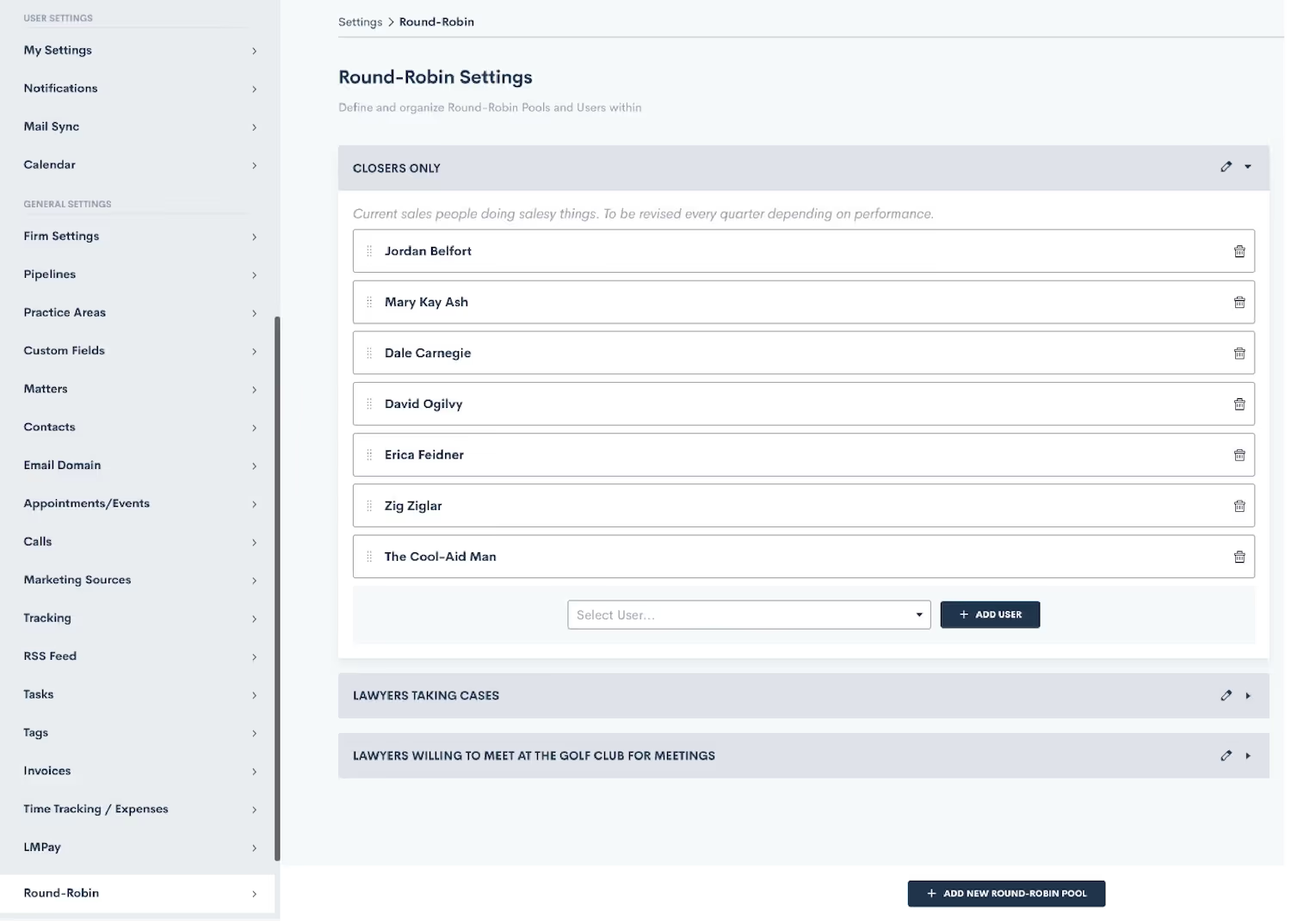
To learn more about Round-Robin settings click here.
Send one-off documents — without using a template
We’ve streamlined your document sharing process. Previously, sharing unique documents required uploading them as templates, even if they were single use. Now, with our latest update, you can bypass this step entirely for one-off documents. Navigate to the matter page, select “Send Document”, and upload your PDF. This enhancement simplifies the process, making it easier to share documents that are unique to a specific matter or contact without cluttering your template library.
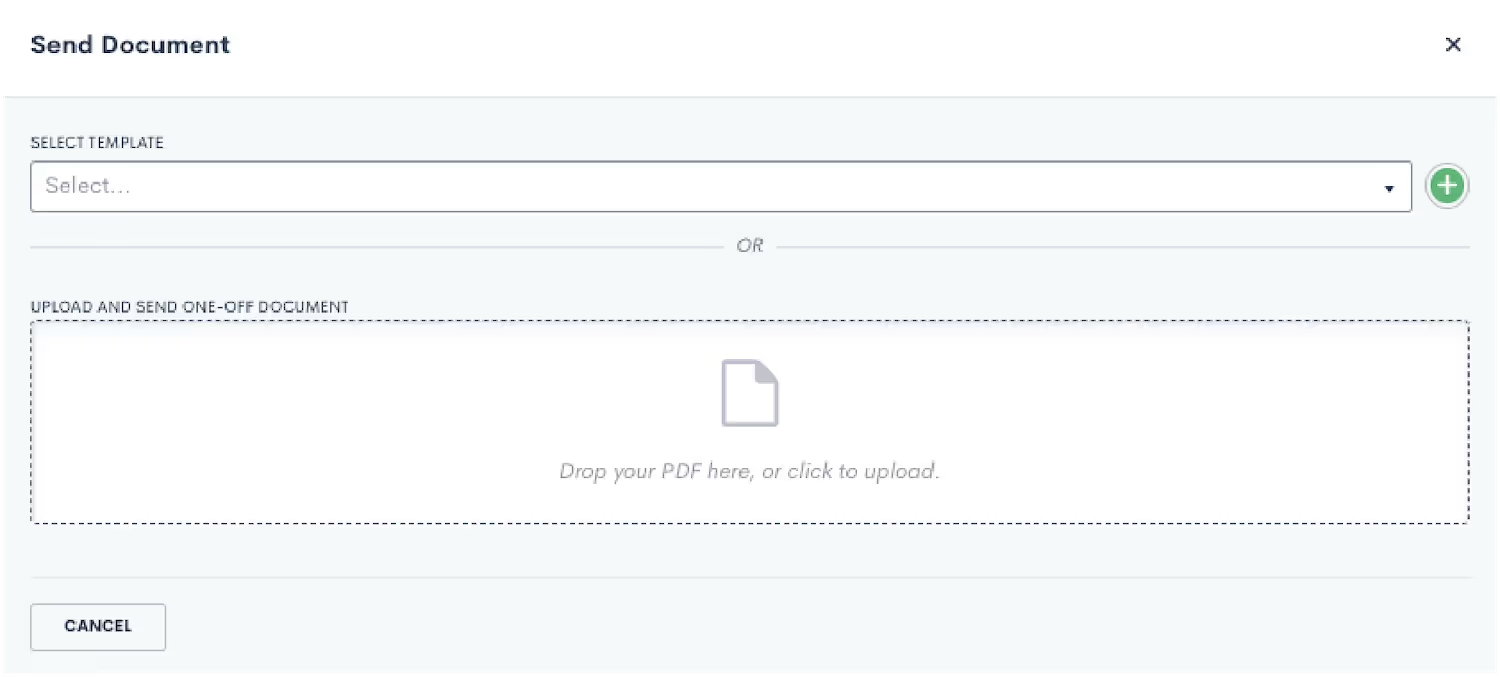
Learn more about how to send a one-off document here.
Quickly locate records and assets with overhauled search bar
Your CRM should keep your data and client information at your fingertips. We’ve overhauled our search bar to make it even easier to find what you need. New headers keep your searches organized so you can effortlessly sift through matters, contacts, companies, and clients. But wait, there’s more! Your searches now also include assets like forms, documents, emails, Automations, and more.
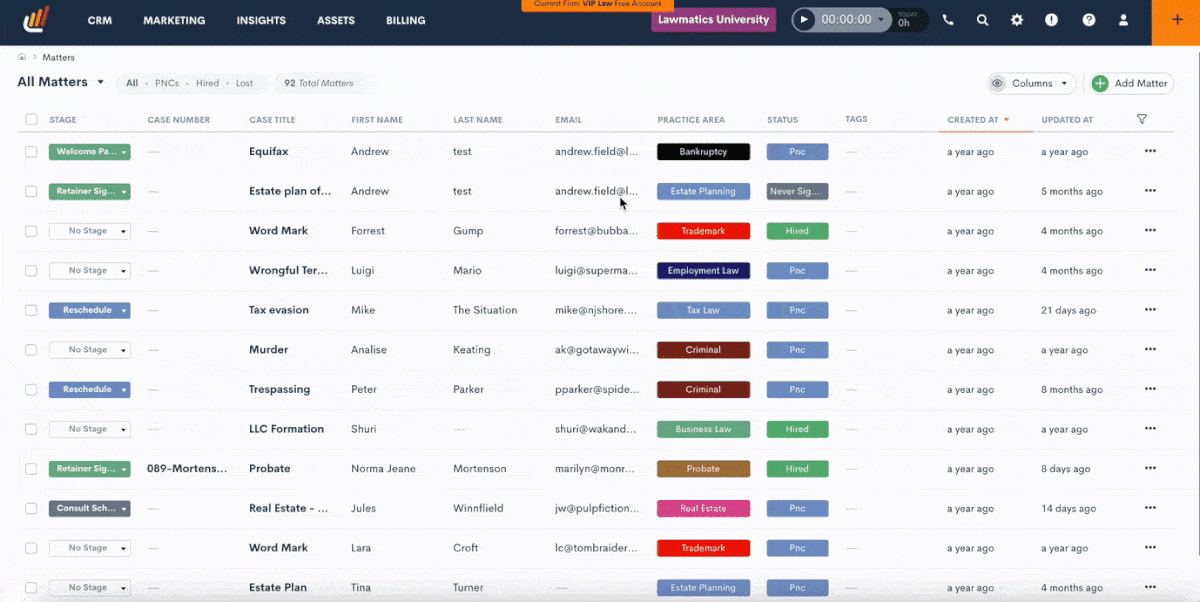
Filter custom reports with appointment fields
Now, you can easily track appointments within a specific time period and monitor your client conversion rates. With the inclusion of appointment-based fields as filters in your custom reports, you have the power to unlock deeper insights and enhance your reporting capabilities with appointment-specific data. Gain a clearer understanding of your business and make data-informed decisions to drive growth.
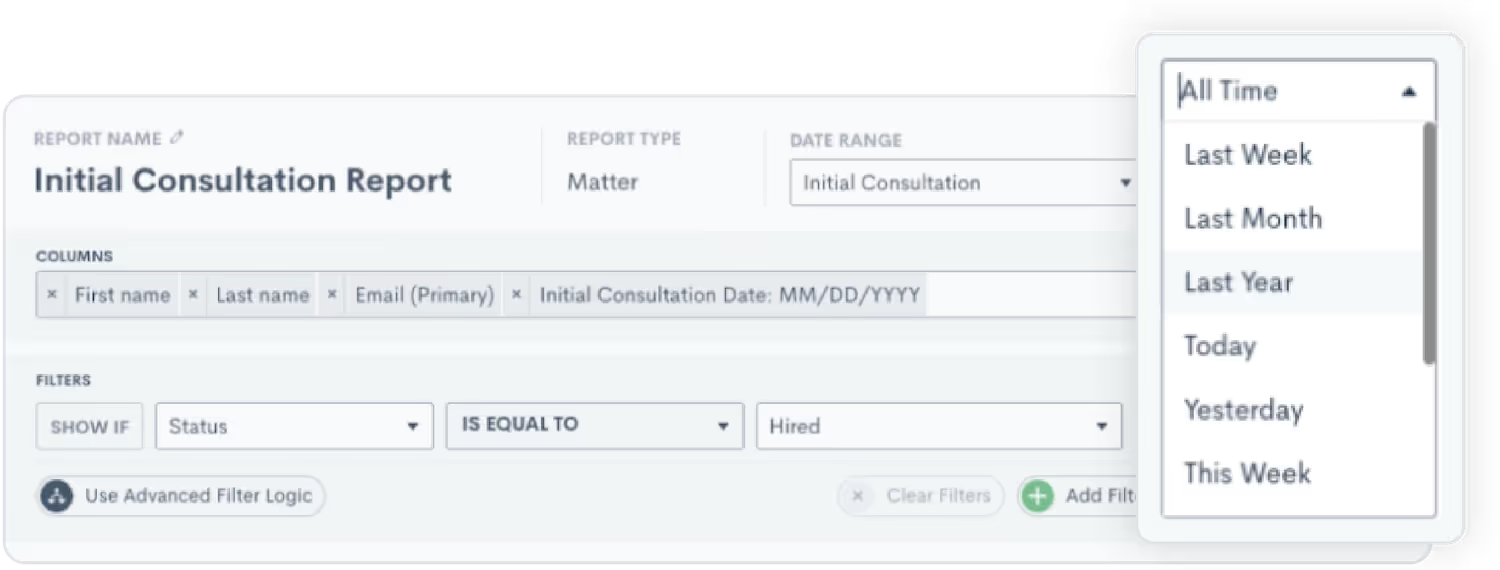
Explore custom report filters here.
Easily export trust account data
With one click, you can export your trust account page as a .csv spreadsheet. This provides a convenient option for law firms to maintain detailed records of their systems, and stay compliant with any state bar regulations regarding financial accountability.
NOTE: This feature is only available to our Time & Billing users.
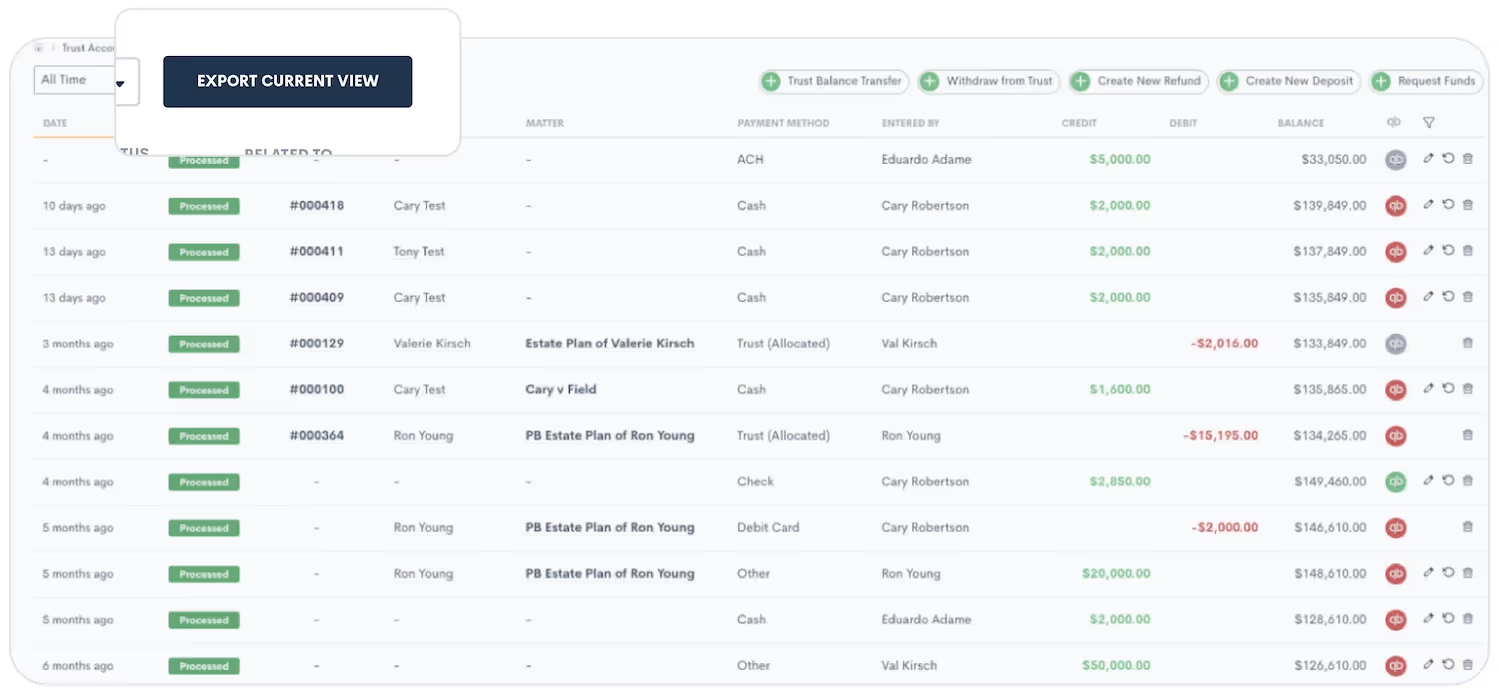
Learn more about trust accounts here.As always, we love your feedback and encourage you to reach out with any questions or suggestions. Thank you for being a valued member of our community. Together, we continue to push the boundaries of what's possible for law firms.Sign in or sign up to get started with Lawmatics today.
Legal billing software is a type of legal software designed specifically for law firms and legal professionals to manage and automate the process of billing clients for legal services. Legal billing software for small firms streamlines the billing workflow, making it easier, more efficient, and accurate.
Why is legal billing important?
Legal billing is important for several reasons, including revenue generation, client expectations, financial management, compliance, and more. Let’s take a look at these examples:
- Revenue generation: Billing clients for legal services is the primary way law firms generate revenue to ensure that lawyers are compensated for their time, expertise, and resources.
- Client expectations: Clear and accurate billing practices help manage client expectations regarding costs and fees, foster trust, and strengthen the attorney-client relationship.
- Financial management: Billing software helps track billable hours, expenses, and payments, providing insights into the firm's financial performance and cash flow.
- Compliance: Legal billing must comply with ethical rules and regulations, including accurately documenting billable hours, providing detailed invoices, and adhering to guidelines for trust accounting.
- Efficiency and productivity: Streamlining the billing process with automated tools reduces administrative burden for lawyers and staff, decreases the likelihood of errors, and ensures invoices are generated promptly.
- Dispute resolution: Detailed billing records serve as valuable documentation in case of disputes over fees or services rendered and can help resolve disagreements and avoid potential legal disputes with clients.
By automating the billing process, legal billing software helps law firms save time, reduce errors, and improve transparency in financial transactions with clients, making it an essential tool for managing the financial aspects of law practices.
What is a legal billing system?
A legal billing system is a software solution designed to facilitate the management of billing processes within law firms and legal departments. It automates various aspects of the billing workflow with time and billing software, expense tracking, invoicing, and client billing management. Simple legal billing software systems are tailored to meet the specific needs of legal professionals and often incorporate options to ensure compliance with ethical rules and regulations governing legal billing practices.
What are the functions of a successful legal billing system?
The best legal billing software for small firms must be straightforward, user-friendly, and efficient. What is needed for billing software? Here are some key features:
- Time tracking: Legal billing software allows lawyers to record the time spent on each client or case, which is crucial for accurately billing clients for billable hours.
- Expense tracking: Automated systems track and manage expenses related to a particular case or client, such as travel expenses, court fees, and other reimbursable costs.
- Invoicing: Billing software generates invoices based on recorded billable hours and expenses, often allows customization of invoice formats, and may support different billing structures (hourly rates, flat fees, contingency fees).
- Reporting: Billing software provides reports on billable hours, expenses, payments received, and outstanding balances to help lawyers and law firms analyze their financial performance.
- Client and matter management: Billing tools organize client information and case details, making it easier to associate billable activities with specific clients or matters.
- Integration: Some legal billing software can integrate with other legal practice management software, accounting software, or CRM systems to create a seamless workflow.
- Compliance and trust accounting: Legal billing software helps ensure compliance with legal accounting rules and regulations, including trust accounting for handling client funds in compliance with ethical guidelines.
When firms ask, “What software is used to keep track of billable hours?” The clear answer is software that will streamline the billing process, improve accuracy and efficiency, ensure compliance with regulatory requirements, and support the growth of the operation.
How much does it cost to buy a billing software for a law firm?
The cost of legal billing software can range from a few hundred dollars per month for small firms with basic needs to tens of thousands of dollars per year for larger firms with advanced functionality and customization requirements. It's essential for law firms and legal departments to carefully evaluate their needs and budget considerations when selecting legal billing software and to consider both the upfront costs and ongoing expenses associated with implementation and usage.
Why use legal software like Lawmatics?
While most legal professionals appreciate the importance of prompt and accurate billing, some still ask, “What does legal software do in relation to billing?”Lawmatics’ law firm billing software automates the billing process — from invoice generation to billing, payment collection, and payment status. Recurrent invoicing, tracking billable hours, matter management, and reporting all work seamlessly together. All logged time entries are transferred directly into invoices as line items for on-demand legal billing and invoice generation.To learn more about how to streamline your legal billing process with Lawmatics, request a demo today.
Subscribe to get our best content in your inbox
Ready to grow your law firm with Lawmatics?
Schedule a demo of legal’s most trusted growth platform.
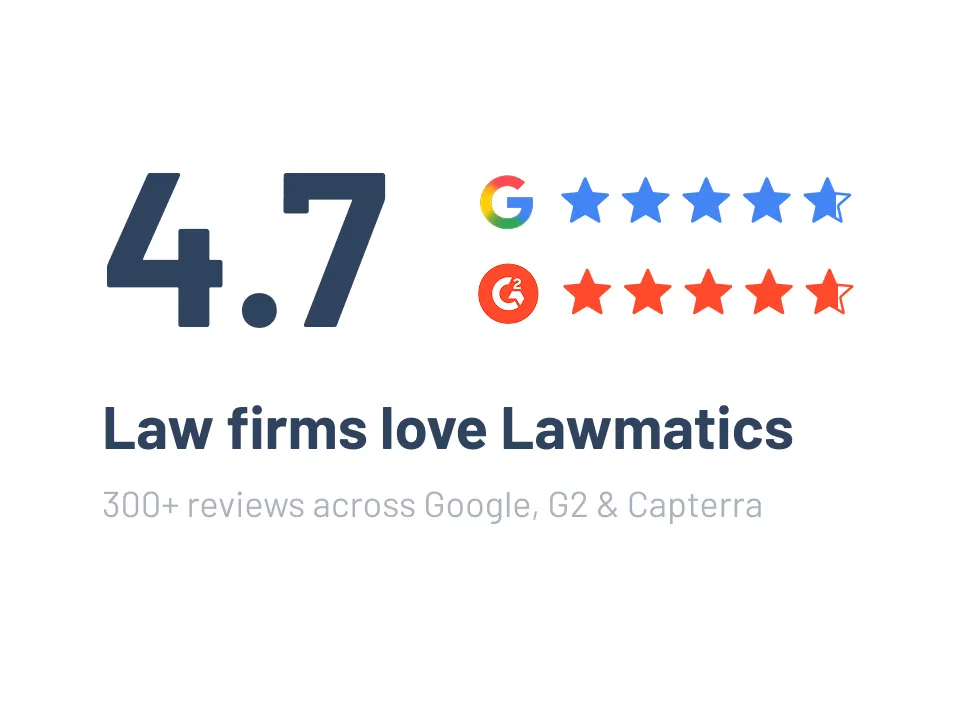




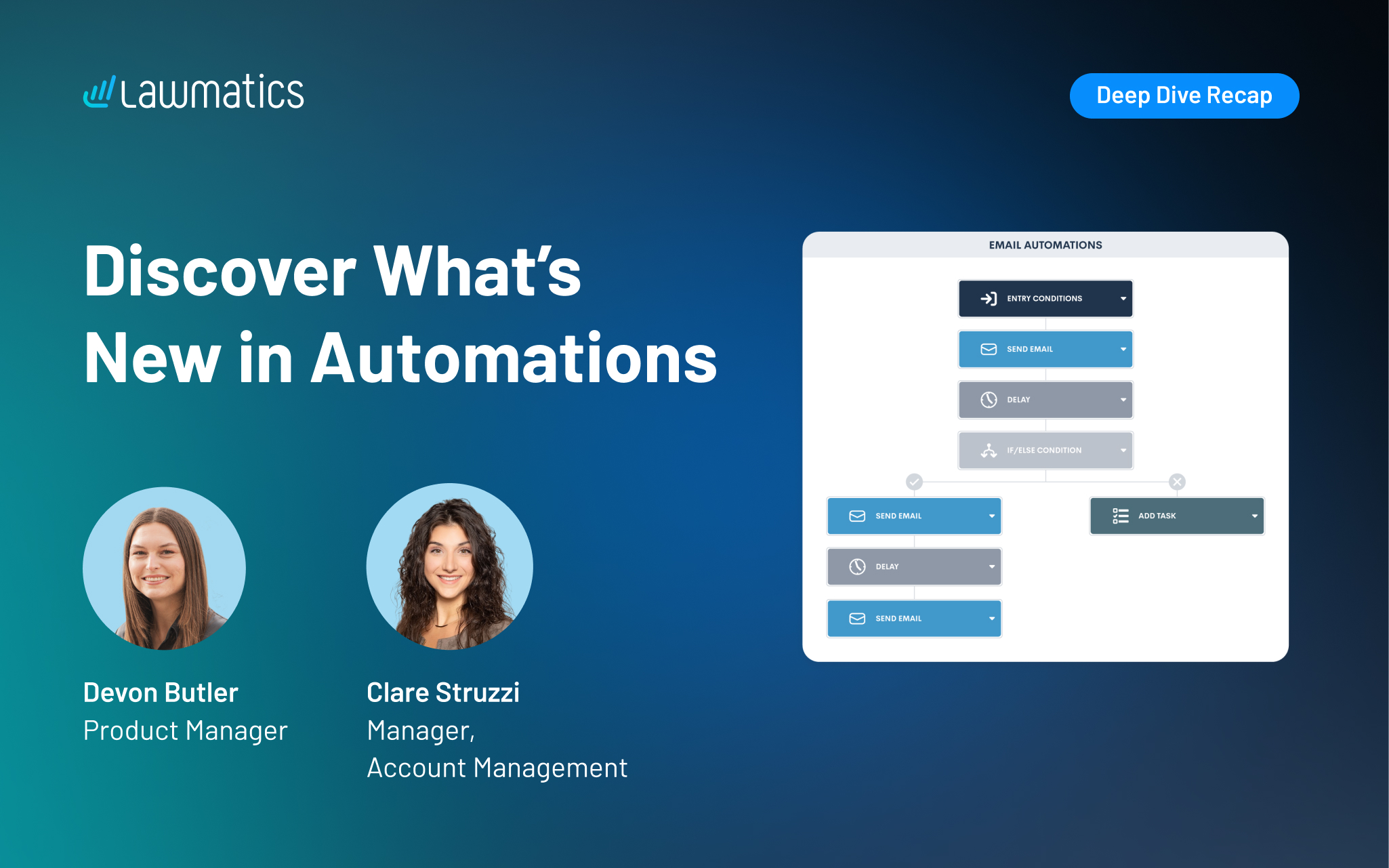




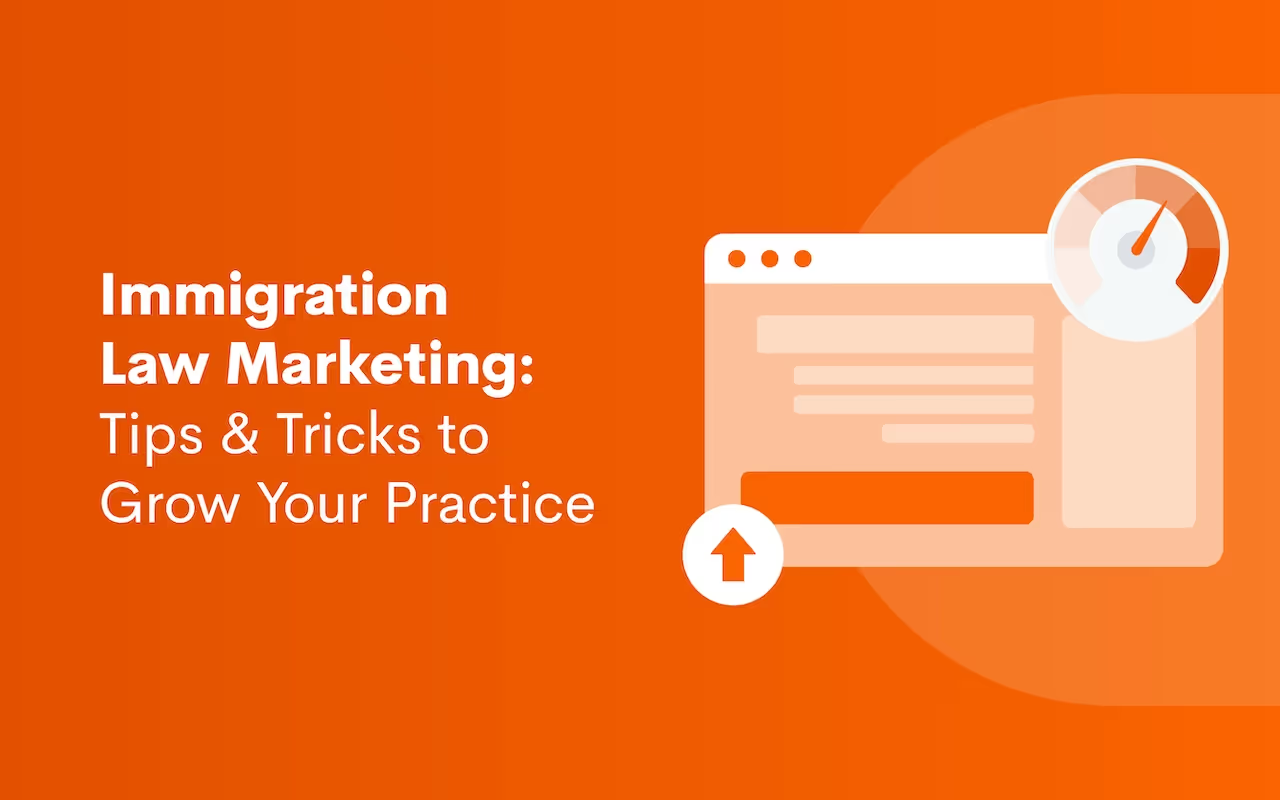

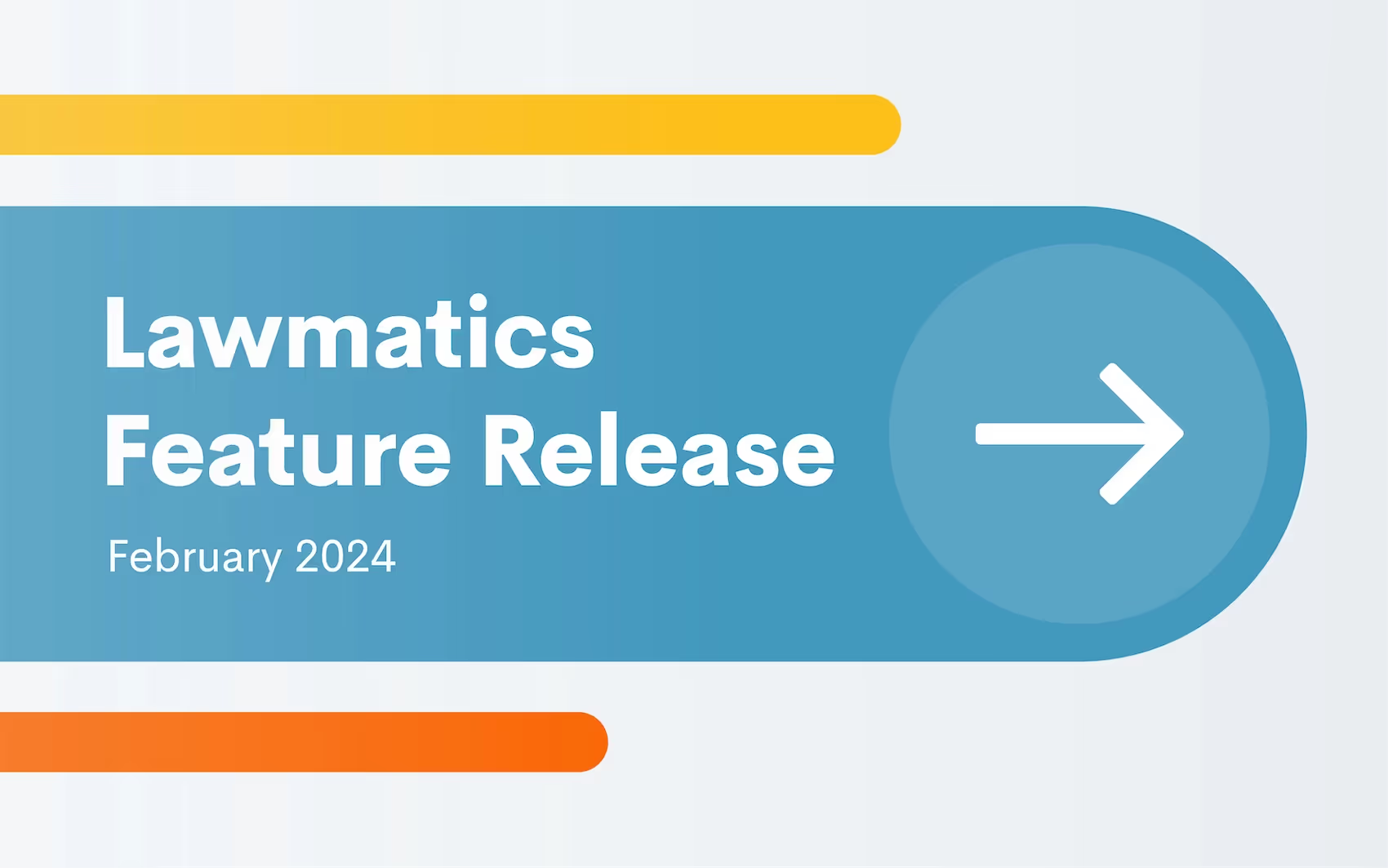

.avif)
.avif)

.avif)
